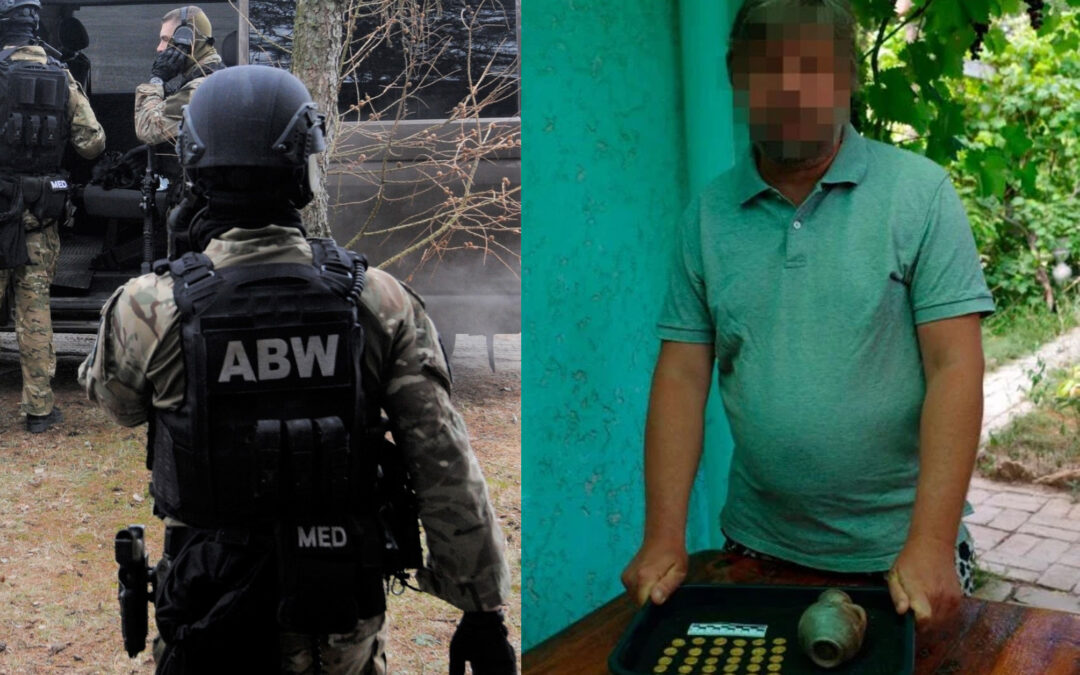Keep our news free from ads and paywalls by making a donation to support our work!

Notes from Poland is run by a small editorial team and is published by an independent, non-profit foundation that is funded through donations from our readers. We cannot do what we do without your support.
Genetic analysis of remains found at a medieval burial site in central Poland has confirmed their Scandinavian origin, marking the first evidence of Viking settlement in that particular Polish region.
Researchers have described the finding as “remarkable”. They hope it can lead to a better understanding of the presence of Vikings in what is now Poland and their relationship with the first Polish state, which was formed around the same time.
Wczesnośredniowieczne #cmentarzysko w Lutomiersku pod Łodzią było miejscem pochówku skandynawskich wojowników – wynika z genetycznych analiz zachowanych tam szczątków. Badania przeprowadzili antropolodzy i genetycy z Uniwersytetu Łódzkiego. #wikingowiehttps://t.co/UFKU0CiRZi
— Nauka w Polsce (@naukawpolsce) December 27, 2024
The burial site in question dates to around the first half of the 11th century and is located in what is now the town of Lutomiersk, near the city of Łódź. It was in fact first identified in the 1940s, with subsequent excavation work uncovering human remains in graves lavishly furnished with artefacts of Scandinavian origin.
However, researchers were unable to draw firm conclusions from the skeletal remains due to their poor state of preservation. But advances in DNA analysis have now provided new insights.
“The bone remains were very poorly preserved due to the unfavourable ground conditions in this region,” Wiesław Lorkiewicz of the University of Łódź’s Department of Anthropology told the Polish Press Agency (PAP).
“A dozen years ago, when we started to take an interest in aDNA [ancient DNA] research, I expressed the opinion that it was impossible to carry out genetic study [of these remains],” he added. “Fortunately, in science, one should never say ‘never’.”
Genetic testing has found that the people buried at the site came from diverse populations, including “people of Scandinavian and Slavic origin, as well as people of mixed origin in relation to both of these groups”, said Paulina Borówka of the same university department.
The researchers also found that Scandinavian DNA was located in various parts of the burial site, indicating that such people played different social roles and that they lived in the area for long enough to have their remains buried in both older and newer parts of the necropolis.
The DNA testing was carried out aspart of an EU-funded project, which allowed the team to send samples to multiple laboratories, including outside Poland. The findings were then compared with genetic material from other burial sites in Poland and abroad.
Now, “the most important puzzle is how these settlers got here,” Borówka told PAP. “This is a remarkable finding, but it is not the end of the research. We are planning several more analyses that may shed even more light on the observations made so far.”
This is the best map of the Viking expansion I’ve seen so far. Lovely piece of work. It shows really well how Vikings navigated rivers too. Source: https://t.co/xrolJpyg1F pic.twitter.com/QLuMBSBNxx
— Simon Kuestenmacher (@simongerman600) September 11, 2019
Lorkiewicz notes that the role of Vikings in Poland and their potential influence on the formation of the Polish state in the 10th century has been discussed for over a hundred years.
However, Borówka adds that, while various waves of settlement by Scandinavian populations in what is now Poland during the Viking Age are already known, the Lutomiersk findings are the first confirmed presence in this part of the country.
In January this year, a sword believed to be 1,000 years old was discovered at the bottom of a river in Poland. That sparked speculation that the item may have belonged to the Vikings. However, experts have expressed scepticism about that claim.
A sword believed to be over 1,000 years old has been found during dredging work on a river in Poland.
The find has sparked speculation that the item belonged to a Viking, but one expert has expressed scepticism about that idea https://t.co/7NorHjZJgq
— Notes from Poland 🇵🇱 (@notesfrompoland) January 16, 2024

Notes from Poland is run by a small editorial team and published by an independent, non-profit foundation that is funded through donations from our readers. We cannot do what we do without your support.
Main image credit: Helgi Halldórsson/Flickr (under CC BY-SA 2.0)

Alicja Ptak is deputy editor-in-chief of Notes from Poland and a multimedia journalist. She has written for Clean Energy Wire and The Times, and she hosts her own podcast, The Warsaw Wire, on Poland’s economy and energy sector. She previously worked for Reuters.



















